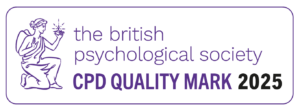The History and Origins of Mindfulness
Explore mindfulness, from the buddha, to yoga and it's great journey to the western world.
Mindfulness is often thought of as a modern wellbeing practice, but its history stretches back thousands of years. At its heart, mindfulness is the simple yet profound act of paying attention to the present moment with openness, curiosity, and acceptance. While today it is often taught in secular settings—such as schools, workplaces, and healthcare—it has deep spiritual and philosophical roots in ancient traditions.
Ancient Beginnings
Mindfulness can be traced back to early Indian traditions, most notably Hinduism and Buddhism. Both traditions placed emphasis on awareness, meditation, and the cultivation of presence as a way of living in harmony with the world.
Hinduism and the Vedic Tradition
Hinduism is one of the oldest surviving religious traditions, with origins reaching back over 4,000 years. Within the Vedic texts, we find early references to meditation, breath awareness, and practices designed to steady the mind. These were seen as pathways to self-realisation and union with the divine. Texts such as the Bhagavad Gita speak of living with focus, balance, and discipline—principles that strongly resemble what we now describe as mindfulness.
The Buddha and the Central Role of Mindfulness
Around 2,500 years ago, Siddhartha Gautama—the Buddha—developed teachings that placed mindfulness (sati in Pali) at the very centre of the path to liberation. In Buddhism, mindfulness is one of the steps of the Noble Eightfold Path, described as the way to reduce suffering and cultivate wisdom.
Here, mindfulness was not just a practice for quiet moments on a meditation cushion, but a way of living: being aware of one’s body, feelings, thoughts, and surroundings in each moment. This understanding of mindfulness as both a meditative practice and a guiding principle for daily life has shaped how it has been taught across generations.

Mindfulness and Yoga
Yoga, which also has its roots in the Indian tradition, overlaps significantly with mindfulness. Beyond the postures that are so well known in the West today, yoga has always been a wider philosophy aimed at uniting body, mind, and spirit. Many yoga practices, such as breath awareness (pranayama) and meditation, are essentially mindfulness in action.
Research today continues to show that people who practise yoga often report higher levels of mindfulness, demonstrating the close relationship between these two ancient paths.
The Journey to the West
While mindfulness has been practised in Eastern cultures for thousands of years, its introduction to the West has been more recent. From the mid-20th century onwards, teachers such as Thich Nhat Hanh, a Vietnamese Zen master, began to share mindfulness in accessible ways that could be understood outside of a Buddhist framework. His writings and teachings brought mindfulness into everyday language, with an emphasis on compassion and simple, daily practice.
Another key figure in this journey was Jon Kabat-Zinn, who studied with Buddhist teachers and later developed Mindfulness-Based Stress Reduction (MBSR) in the late 1970s. His work helped bridge Eastern wisdom with Western science, opening the door for mindfulness to be used in hospitals, schools, and beyond.
Alongside Kabat-Zinn, teachers like Jack Kornfield, Sharon Salzberg, and Joseph Goldstein founded centres such as the Insight Meditation Society, helping to embed mindfulness practice in Western contexts while keeping its Buddhist roots visible.
A Universal Human Practice
Although Buddhism and Hinduism are often highlighted in discussions of mindfulness, it is important to remember that similar practices of contemplation and presence exist across many traditions. In Christianity, Judaism, and Islam, there are forms of prayer and reflection that encourage present-moment awareness. This shows that mindfulness is not exclusive to any one religion, but rather a universal human capacity that can be nurtured in many different ways.
Mindfulness Today
Today, mindfulness is taught in a wide variety of settings—from meditation centres to community groups, schools, and healthcare services. For some, it is a spiritual path; for others, it is a practical tool for reducing stress and cultivating wellbeing. What remains constant is the essence: bringing awareness to the here and now, with kindness and curiosity.
A Takeaway
When we practise mindfulness today, we are joining a lineage that stretches back thousands of years. Whether it is through quiet meditation, mindful breathing, or simply paying attention as we wash the dishes, we are taking part in a tradition that has been passed from generation to generation.
Mindfulness, at its heart, is about being fully alive in the present moment. Its history may be long and complex, but its practice remains beautifully simple.
Further Reading and Resources
Here are some excellent places to explore the history, philosophy, and practice of mindfulness in more depth:








